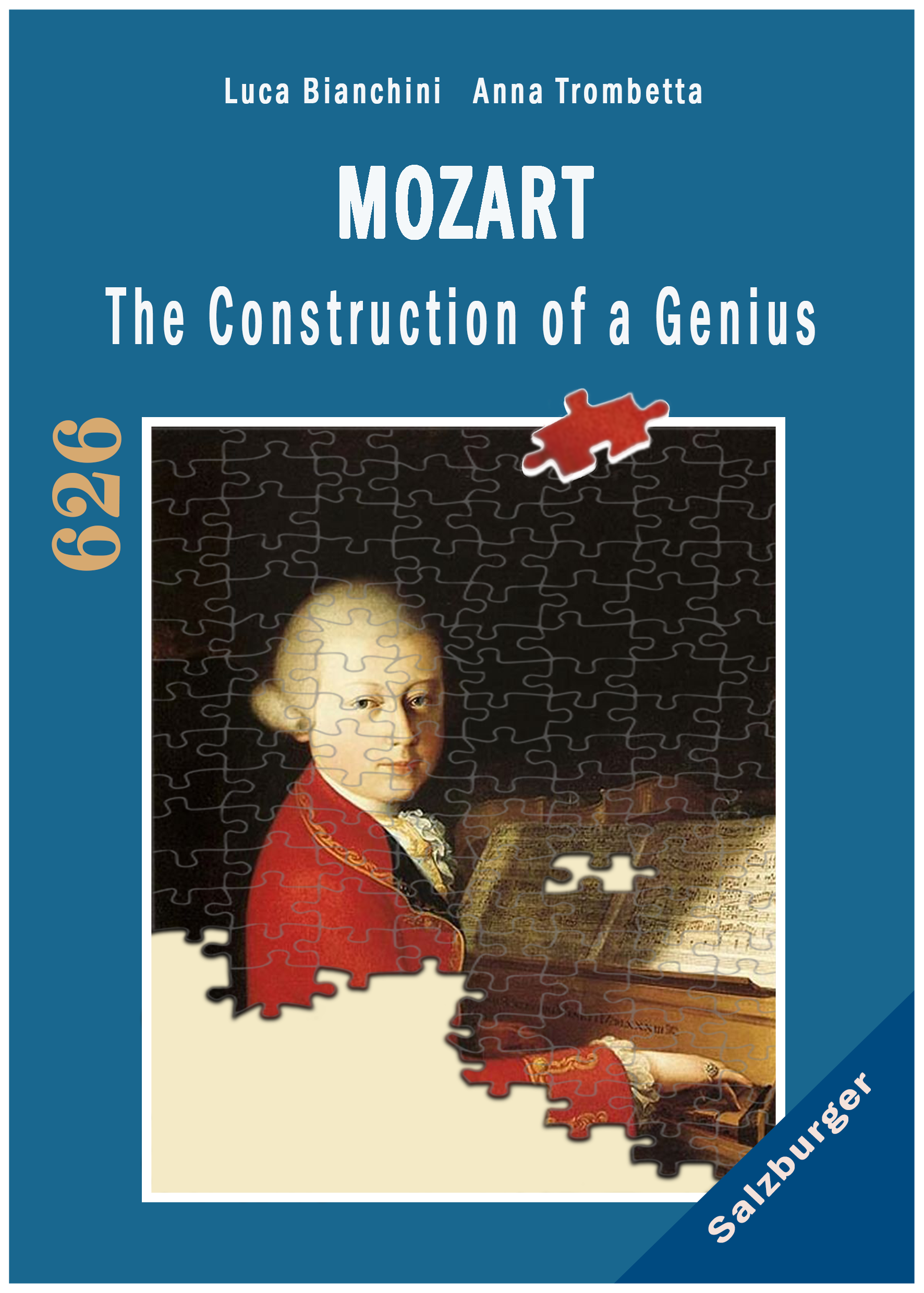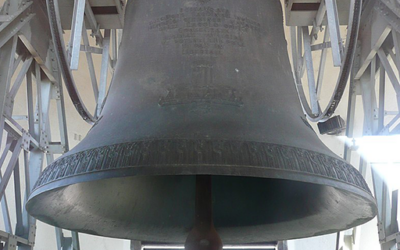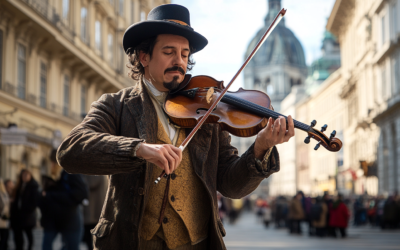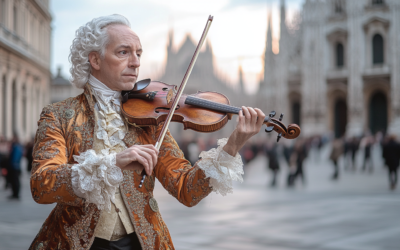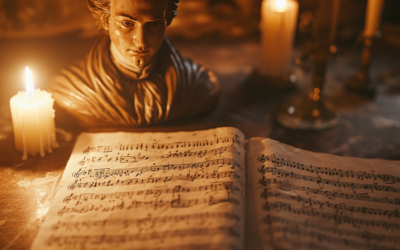Wolfgang Amadé Mozart
The Deceptive Nature of Mozart’s Catalogue
The Thematic Catalogue traditionally credited to Mozart is fraught with inaccuracies, suggesting that many of his famous works might not be his at all. This prompts a necessary reevaluation of Mozart’s legacy and the authenticity of his compositions.
“If Mozart had truly authored the Catalogue, he would not have mistakenly attributed the Arietta K. 541 to a bass when it was clearly intended for a tenor-baritone, casting further doubt on the document’s authenticity.”
Mozart: The Construction of a Genius
The Questionable Authenticity of K. 456
The legitimacy of Mozart’s Thematic Catalogue has long been debated, particularly regarding the inclusion of the Concerto K. 456 for Harpsichord and Orchestra, supposedly composed for the blind harpsichordist Teresa Paradis. The Catalogue indicates that the piece was completed on 30 September, just two days before Paradis’s final performance in Paris on 2 October. This timeline raises serious doubts. It seems highly unlikely that Mozart could have composed the Concerto, prepared all the necessary parts, and sent them to Paris in such a short span. The inclusion of this Concerto in the Catalogue without addressing these logistical challenges suggests a likely error or falsification in the dating.
Inconsistencies Surrounding K. 541
Further inconsistencies arise with the Arietta for Bass, K. 541, titled ‘Un bacio di mano’. The Catalogue lists this work as composed in May, yet it was later included in a Viennese revival of Pasquale Anfossi’s opera that same year. The Catalogue incorrectly attributes the performance to the famous bass Albertarelli, while in reality, it was sung by the tenor-baritone Del Sole. Such a mistake would be improbable if Mozart himself had recorded the information, casting further doubt on the Catalogue’s authenticity.
The Mystery of the Jupiter Symphony (K. 551)
The doubts surrounding Mozart’s Catalogue also extend to the famous Jupiter Symphony (K. 551). Some scholars point to similarities between this Symphony and the Arietta K. 541 to support Mozart’s authorship. However, if K. 541 was wrongly attributed to Mozart, the legitimacy of the Jupiter Symphony’s attribution is also questionable. Moreover, the original manuscript of the Symphony lacks Mozart’s signature or date, leading to speculation that the Catalogue was compiled posthumously to attribute this and other works to Mozart without solid evidence.
Discrepancies in Other Works
Questions also surround the authenticity of the Trio for Harpsichord, Violin, and Cello, K. 564, and the Masonic music, K. 477. Both works are listed in Mozart’s Catalogue, but with suspicious details that suggest someone else may have composed or copied them. The strikingly similar handwriting between the Catalogue and the manuscripts suggests potential forgery. Albert Osborn, a scholar on falsifications, argued that anyone who reproduces handwriting exactly is likely a forger, as it is impossible for a person to replicate the same phrase, musical passage, or signature identically multiple times.
Conclusion: A Catalogue of Errors
Often regarded as a definitive record of Mozart’s works, the Thematic Catalogue is fraught with inaccuracies, questionable attributions, and possible forgeries. These issues indicate that much of what has been traditionally accepted about Mozart’s later works, including some of his most celebrated compositions, may not be as it seems.
The discrepancies found in the Catalogue suggest it was likely created after Mozart’s death, potentially by those with an interest in enhancing his legacy. Given all these contradictions, the authenticity of many works attributed to Mozart must be reconsidered.
Journal of Forensic Document Examination
Mozart’s Catalogue Exposed
You May Also Like
The Echo of the Pummerin Bell
The powerful resonance of the Pummerin bell in Vienna may have influenced Mozart’s compositions, particularly Sarastro’s arias in The Magic Flute.
The Hidden Influence of Joseph Boulogne, Chevalier de Saint-George
Joseph Boulogne, known as the “Black Mozart”, was shaping the future of music while Mozart was still struggling for recognition in Paris. But history has buried the significant influence Saint-George had on Mozart’s career, erasing his pioneering style from the narrative.
The Forgotten Viennese Quartets
Attributing Offertorium K.34 to Mozart is not just misleading, it reflects the careless methods used by 19th-century scholars to inflate his legacy. Without an autograph or solid evidence, this work should not be considered part of his output.”
Mozart’s Bassoon Concerto: A Question of Authorship
The Bassoon Concerto K.191 raises more questions than it answers. Long thought to have been composed for a Munich bassoonist, new evidence suggests Mozart had no clear performer in mind. The concerto’s disjointed movements and other dubious compositions attributed to Mozart add further complexity to his legacy
The Uncertain Origins of Mozart’s Early String Quartets
Mozart’s so-called “Milanese Quartets” (K.155, 158, and 159) have long been subject to debate, primarily due to their ambiguous instrumentation and structural weaknesses. Were these works part of a larger series of orchestral divertimenti, hastily repurposed as string quartets? The answer remains elusive, reflecting the young composer’s struggles to find his own voice.
Simplicity, Errors, and the Myth of Perfection
Mozart’s canons are not as complex as often claimed, with notable errors in K.553 and K.554, and the myth of “V’amo di cuore teneramente” K.348 being debunked.

